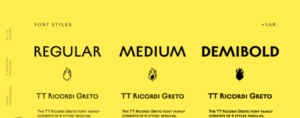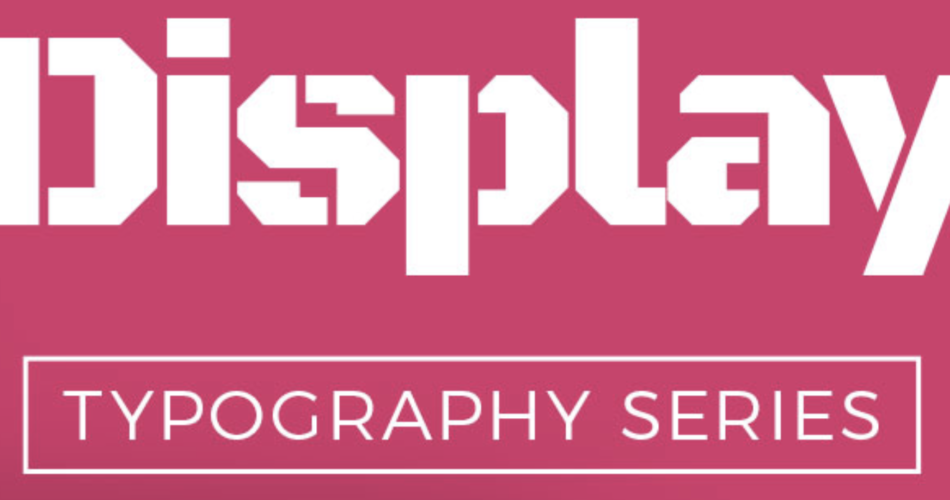Display fonts are a powerful tool for enhancing the visual appeal of your brand. Unlike traditional fonts, display fonts are designed to make a statement and grab the attention of your audience. They come in a variety of styles, ranging from bold and extravagant to elegant and sophisticated. By incorporating display fonts into your brand’s visual identity, you can create a unique and memorable impression that sets you apart from your competitors.

Display fonts
Contents
- 1 The Impact of Display Fonts on Brand Visual Appeal
- 2 Why SEO-Optimized Typography Matters
- 3 Choosing the Right Display Fonts for Your Brand
- 4 Best Practices for Using Display Fonts in Web Design
- 5 How Display Fonts Can Enhance User Experience
- 6 Tips for Optimizing Display Fonts for SEO
- 7 Examples of Successful Brands Using Display Fonts
- 8 Tools and Resources for Finding and Implementing Display Fonts
- 9 Conclusion: Unlocking the Power of Display Fonts for Your Brand’s Visual Appeal
The Impact of Display Fonts on Brand Visual Appeal
Display fonts have a significant impact on the visual appeal of your brand. They have the power to evoke emotions, convey personality, and make a lasting impression on your audience. When used effectively, display fonts can instantly captivate your audience and create a strong visual identity for your brand.
One of the key advantages of display fonts is their ability to convey a specific mood or tone. For example, a bold and futuristic display font can convey a sense of innovation and cutting-edge technology, while a handwritten script font can evoke a feeling of nostalgia and authenticity. By selecting the right display font that aligns with your brand’s values and personality, you can create a visual language that resonates with your target audience.
Why SEO-Optimized Typography Matters
In today’s digital age, having a strong online presence is crucial for the success of any brand. Search engine optimization (SEO) plays a vital role in ensuring that your brand is discoverable online. While most people associate SEO with keywords and meta tags, typography also plays a significant role in optimizing your website for search engines.
Search engines like Google consider various factors when ranking websites, and typography is one of them. By using SEO-optimized typography, you can improve your website’s visibility and increase the chances of ranking higher in search engine results pages (SERPs). This can lead to more organic traffic, increased brand exposure, and ultimately, higher conversions.
When it comes to SEO-optimized typography, there are a few key factors to consider. First, you need to ensure that your display fonts are web-safe and can be rendered correctly on different devices and browsers. This ensures that your website is accessible to a wide range of users, regardless of their device or operating system. Second, you need to pay attention to the readability and legibility of your display fonts. Clear and easy-to-read fonts not only improve the user experience but also make it easier for search engines to crawl and index your content.
Choosing the Right Display Fonts for Your Brand
Choosing the right display fonts for your brand is a critical step in creating a visually appealing and cohesive brand identity. Here are some factors to consider when selecting display fonts:
- Brand Personality: Your display fonts should reflect the personality and values of your brand. If your brand is modern and innovative, you may opt for bold and geometric display fonts. On the other hand, if your brand is elegant and sophisticated, you may choose script or serif display fonts.
- Readability: While display fonts are meant to be eye-catching, it’s essential to ensure that they are still readable. Avoid fonts that are too elaborate or difficult to decipher, as this can negatively impact the user experience.
- Consistency: Consistency is key when it comes to branding. Choose display fonts that complement your logo and other brand elements to create a cohesive and unified visual identity.
- Versatility: Consider how your chosen display fonts will work across different mediums and platforms. Ensure that they are scalable and can adapt to various design requirements.
Best Practices for Using Display Fonts in Web Design
When using display fonts in web design, it’s essential to follow best practices to ensure a seamless user experience and optimal visual appeal. Here are some tips to keep in mind:
- Limit the Number of Fonts: Using too many fonts can create visual clutter and make your website appear unprofessional. Stick to two or three display fonts that complement each other and create a cohesive look.
- Contrast is Key: Use display fonts that provide contrast with your body text and other design elements. This helps create visual hierarchy and makes your important messages stand out.
- Pay Attention to Hierarchy: Use different weights and sizes of your display fonts to establish a clear hierarchy on your website. This makes it easier for users to navigate and find the information they are looking for.
- Test for Readability: Before finalizing your display fonts, test them on different devices and screens to ensure that they are readable and legible. Adjust the font size and spacing if needed to improve readability.
How Display Fonts Can Enhance User Experience
Display fonts not only enhance the visual appeal of your brand but also play a crucial role in improving the user experience on your website. Here’s how display fonts can enhance user experience:
- Brand Recognition: Using consistent display fonts across your website and other brand assets helps users recognize and remember your brand. This creates a sense of familiarity and trust, leading to a positive user experience.
- Visual Hierarchy: Display fonts can be used to establish visual hierarchy and guide users through your website. By using different font weights, sizes, and styles, you can highlight important information and make it easier for users to find what they’re looking for.
- Emotional Connection: Display fonts can evoke emotions and create a connection with your audience. By choosing fonts that align with your brand’s personality and values, you can create a positive emotional experience for your users.
Tips for Optimizing Display Fonts for SEO
To optimize your display fonts for SEO, consider the following tips:
- Web-Safe Fonts: Use web-safe fonts that are widely supported by different devices and browsers. This ensures that your display fonts are rendered correctly and can be crawled by search engines.
- Font Loading Optimization: Optimize the loading of your display fonts to improve the overall performance of your website. Use techniques like font preloading and asynchronous loading to reduce load times.
- Text Accessibility: Ensure that your display fonts meet accessibility standards by providing alternative text for users who may have visual impairments. This helps improve the accessibility of your website and can also benefit your SEO efforts.
- Font Metadata: Include relevant font metadata, such as font names and descriptions, in your website’s code. This helps search engines understand the context and relevance of your display fonts.
Examples of Successful Brands Using Display Fonts
Several successful brands have effectively incorporated display fonts into their visual identity. Let’s take a look at some examples:
- Coca-Cola: Coca-Cola uses a custom display font called “Spencerian Script” for its logo and branding. This font reflects the brand’s heritage and evokes a sense of nostalgia and tradition.
- Nike: Nike uses the display font “Futura Bold” for its iconic “Just Do It” slogan. This bold and impactful font reinforces Nike’s brand message of empowerment and determination.
- Apple: Apple uses the display font “San Francisco” across its product packaging, website, and marketing materials. This modern and clean font reflects Apple’s minimalist design aesthetic.
Tools and Resources for Finding and Implementing Display Fonts
Finding the right display fonts for your brand can be a daunting task. Luckily, there are several tools and resources available to help you in your search:
- Google Fonts: Google Fonts offers a wide selection of free and open-source display fonts that can be easily integrated into your website.
- Adobe Fonts: Adobe Fonts provides a vast library of high-quality display fonts that can be used for both print and web design projects.
- Font Pair: Font Pair is a website that offers curated font combinations to help you find the perfect pairing of display fonts for your brand.
- Typekit: Typekit is a subscription-based font service by Adobe that offers a vast collection of display fonts for web and print design.
Conclusion: Unlocking the Power of Display Fonts for Your Brand’s Visual Appeal
Display fonts have the power to elevate your brand’s visual appeal and create a lasting impression on your audience. By carefully selecting and implementing the right fonts, you can create a unique and memorable brand identity that sets you apart from your competitors. Remember to optimize your fonts for SEO to improve your website’s visibility and increase your chances of ranking higher in search engine results. With the right fonts and a well-executed design strategy, you can unlock the full potential of your brand’s visual appeal.
